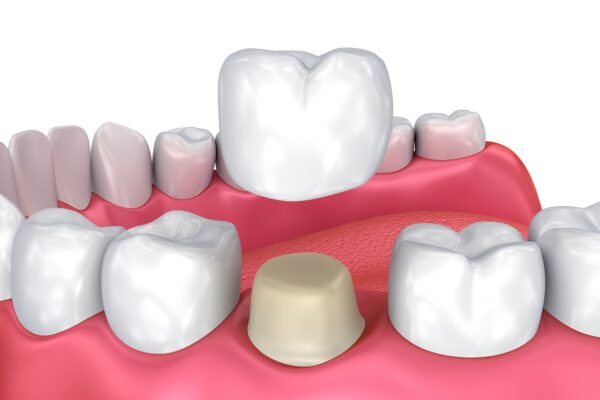Among the most common age-related brain degenerative diseases, Parkinson’s ranks second. The World Health Organization reports that this degenerative condition associated with motor symptoms has affected more than 8.5 billion people.
A person developing Parkinson’s experiences cognitive issues, tremors, and stiffened limbs. Doctors are yet to understand the cause of the disease. Nevertheless, low levels of norepinephrine and dopamine are linked with this degenerative disease. In addition, individuals with certain risk factors, such as traumatic brain injury in the past and age, are at an increased risk of developing Parkinson’s.
However, several researchers have found a link between environmental toxins and Parkinson’s disease. The question is: can environmental toxins trigger changes in a person’s brain? Absolutely, yes.
With that said, we’ll discuss a few toxins in the environment that may increase a person’s likelihood of developing Parkinson’s.
1 Pesticides or Herbicides
Table of Contents
Over the past decade, a good number of studies have found a link between pesticides and Parkinson’s disease. Researchers reveal that people exposed to paraquat or rotenone are at an increased risk of developing Parkinson’s disease than those who aren’t.
Paraquat stimulates the formation of certain oxygen derivatives, which may harm cellular structures. On the other hand, rotenone, an insecticidal chemical, prevents mitochondria from performing its function. It induces the generation of ROS or reactive oxygen species by blocking electron transport in mitochondria, the powerhouse of cells.
These substances are commonly found in nets or clothing used for killing mosquitoes.
2 Solvents
Did you know that trichloroethylene (TCE) is linked with Parkinson’s Disease? This common environmental contaminant and widely used industrial solvent can degrease metal parts, dry clean clothes, and decaffeinate coffee.
Recently, a small epidemiological study revealed that hobby or occupational exposure to TCE can increase a person’s risk of developing Parkinson’s by 500 percent. In fact, the chemical has been found to reproduce the pathological features of the progressive disorder in multiple animal studies.
Note that those who work with TCE aren’t the only ones at risk of developing Parkinson’s. Trichloroethylene often contaminates indoor air, taints groundwater, and pollutes outdoor air. Ultimately, it makes its way into schools, homes, and business establishments.
Something similar happened with veterans at Marine Corps Base Camp Lejeune a few decades ago. In the early 1980s, trichloroethylene, along with perchloroethylene (PCE), were found in Camp Lejeune’s water supply system. Due to exposure to these toxins, many veterans stationed at the base developed Parkinson’s Disease.
While veterans can file claims with the United States Department of Veterans Affairs, TorHoerman Law reveals that only a few claimants received compensation. The rest faced denials.
Since the passing of the “Camp Lejeune Justice Act of 2022,” thousands of military veterans have filed civil lawsuits against the government of the United States. The Camp Lejeune lawsuit payout per person, on average, could range from $10,000 to $500,000. Of course, the exact amount depends on how strong the victim’s case is.
3 Manganese
Manganese neurotoxicity is not as much a concern in any industry as it is in occupational settings, especially for those working in the mining, steel-making, and welding industries. Exposure to manganese encourages the release of alpha-synuclein from nerve cells. The buildup of alpha-synuclein results in inflammation as well as neurodegeneration, which further leads to the development of Parkinson’s Disease.
In Eastern Europe, abusers injecting drugs with high doses of manganese have been afflicted with Parkinsonism (manganese-related). The symptoms of manganese-induced Parkinsonism are often confused with Parkinson’s Disease. However, the underlying biology is distinct, and so is the treatment.
4 MPTP
A fairly large number of studies have identified 1-methyl-4-phenyl-1,2,3,6-tetrahydropyridine, often abbreviated as MPTP, as a cause of permanent Parkinsonism, a Parkinson’s Disease syndrome.
MPTP attacks the substantia nigra of the brain, where it attacks dopaminergic neurons. The clinical signs of MPTP-induced Parkinsonism include micrographia and seborrhea, speech disturbance, drooling, loss of facial expression and postural reflexes, gait disturbance, flex posture, rigidity, and bradykinesia. Freezing episodes have also been observed.
This eye-opening link between MPTP and the progressive disorder was brought to light four decades ago when seven young adults developed severe Parkinsonism shortly after injecting themselves with synthetic heroin consisting of MPTP.
A Final Word
While studies have shown a strong connection between environmental toxins and Parkinson’s Disease, they aren’t the only culprit. Limiting exposure to these toxins may lower your risk, but you can still develop Parkinson’s. Several genetic parameters are believed to increase a person’s risk of Parkinson’s.
Despite advancements in the medical field, there is no cure for this progressive disorder. However, medicines can help control its symptoms. In some more advanced cases, your doctor may advise surgery. Lifestyle changes can also help improve the symptoms of Parkinson’s Disease. If you suspect you or your loved ones are developing Parkinson’s, getting in touch with a doctor will be the best bet.





